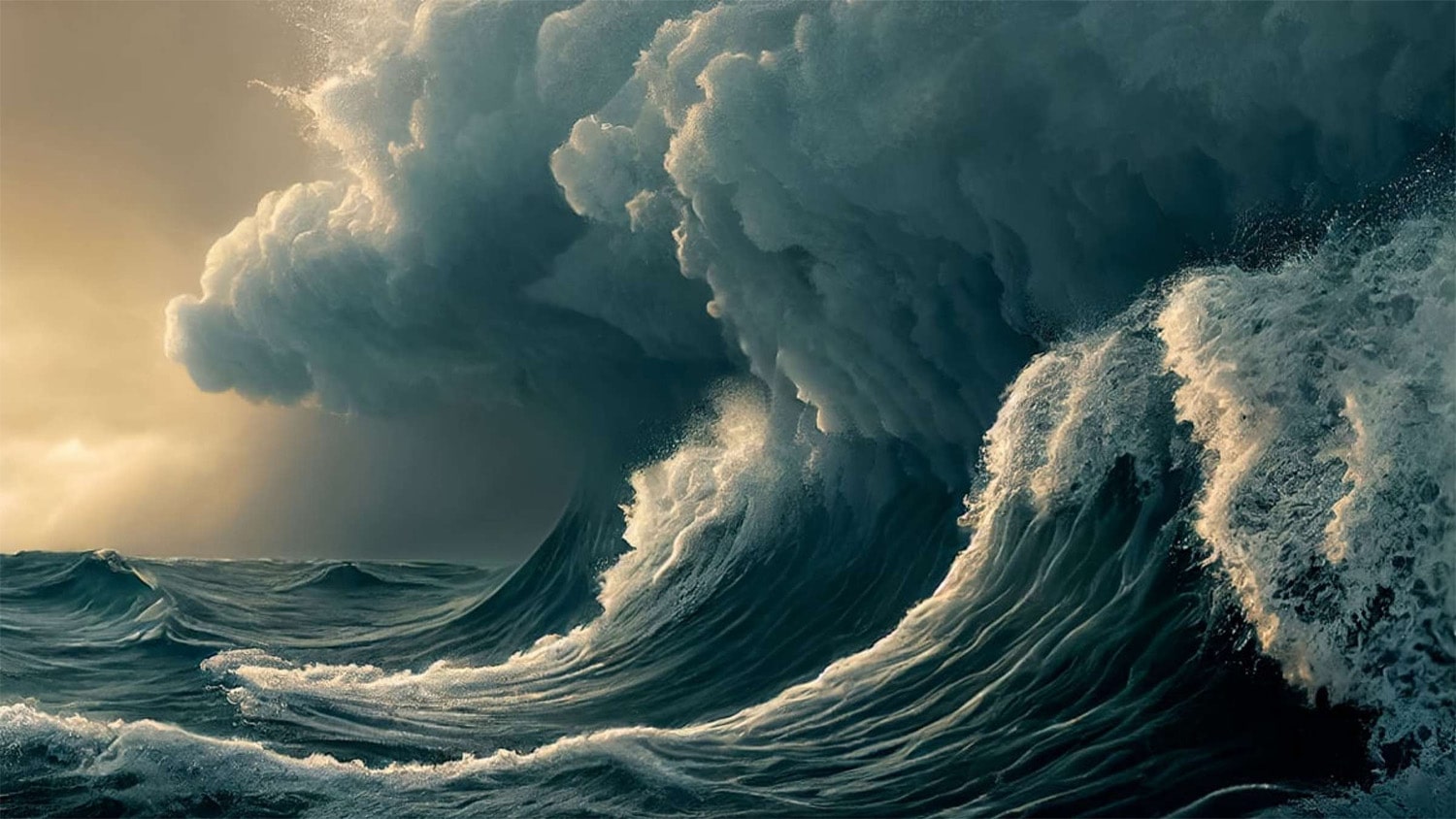
25 interesting facts about Tsunamis
- 👁️ 291
Tsunamis, often referred to as seismic sea waves, are among the most powerful and destructive natural disasters known to mankind. These formidable ocean waves are primarily caused by underwater earthquakes, volcanic eruptions, or landslides. Unlike normal sea waves, which are generated by wind, tsunamis can travel across entire ocean basins with little loss of energy, making their impact felt thousands of kilometers away from the source. The term “tsunami” is derived from the Japanese words “tsu” (harbor) and “nami” (wave), reflecting Japan’s long history of experiencing these catastrophic events. Here are 25 interesting and informative facts about tsunamis that highlight their nature, history, and impact.
- The speed of a tsunami can exceed 800 kilometers per hour (500 miles per hour), similar to the speed of a jet plane.
- Tsunamis can travel across entire ocean basins, from one continent to another.
- The height of a tsunami wave in deep water is typically less than 1 meter (3 feet), but upon reaching shallow water, it can grow to more than 30 meters (100 feet).
- The 2004 Indian Ocean tsunami was one of the deadliest natural disasters in history, causing over 230,000 deaths across 14 countries.
- Tsunami waves can come ashore for hours, with successive waves arriving minutes to hours apart.
- The Pacific Ocean’s “Ring of Fire,” known for its seismic activity, is the most tsunami-prone area in the world.
- Tsunami warning systems use underwater seismographs and sea-level monitoring stations to detect tsunamis early.
- Ancient Greek historian Thucydides was the first to suggest that tsunamis were related to underwater earthquakes.
- The energy of a tsunami depends on the volume of water displaced by the seismic event that generates it.
- A tsunami’s wave period, the time between successive waves, can range from 5 minutes to an hour.
- Tsunamis have been recorded in all of the world’s oceans and seas, including the Mediterranean Sea and the Caribbean Sea.
- The 2011 Tōhoku earthquake and tsunami in Japan triggered the Fukushima Daiichi nuclear disaster.
- Unlike wind-generated waves, which only affect the water’s surface, tsunami waves involve the movement of the entire water column, from the ocean surface to the seabed.
- The word “tsunami” was adopted internationally in the 20th century; before that, these phenomena were commonly called tidal waves, though their generation is unrelated to tides.
- Underwater landslides or volcanic eruptions can also generate tsunamis, not just earthquakes.
- Tsunamis can cause flooding, destroy buildings, and lead to significant loss of life and environmental damage.
- The first tsunami ever recorded occurred in 426 B.C. in the Aegean Sea.
- Coastal vegetation can help reduce the impact of tsunamis by absorbing energy and trapping sediments.
- Historical records show that tsunamis have been affecting human societies for thousands of years.
- The deadliest tsunami in recorded history occurred on July 9, 869, in the Sendai area of Japan, known as the Jogan tsunami.
- Tsunamis can carry debris and people out to sea when they recede, adding to the devastation.
- The risk of tsunamis is increasing in some areas due to climate change and rising sea levels.
- Scientists study ancient tsunamis through sediment deposits to understand their frequency and impact.
- After the 2004 Indian Ocean tsunami, December 26th was designated as World Tsunami Awareness Day by the United Nations.
- Tsunami waves can strip beaches of sand and uproot trees, altering the landscape significantly.
Tsunamis are a stark reminder of the dynamic and sometimes violent nature of Earth. Despite their beauty when viewed from afar, tsunamis are capable of causing widespread destruction and altering landscapes permanently. Understanding the science behind tsunamis and improving early warning systems can help mitigate their impact and save lives. The study of tsunamis not only sheds light on these powerful natural phenomena but also on the resilience of human communities in the face of disaster.
Tsunamis, often referred to as seismic sea waves, are among the most powerful and destructive natural disasters known to mankind. These formidable ocean waves are primarily caused by underwater earthquakes, volcanic eruptions, or landslides. Unlike normal sea waves, which are generated by wind, tsunamis can travel across entire ocean basins…